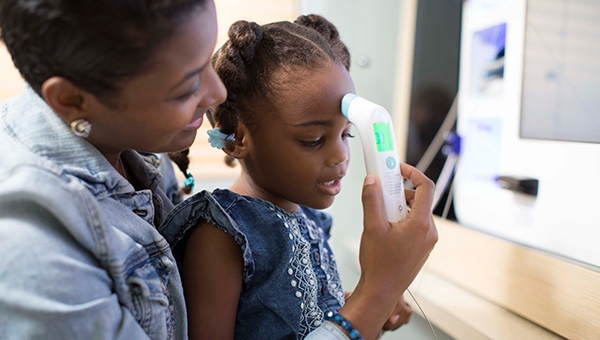Fever Care
Your body temperature is soaring higher than normal, and you don’t feel right. It’s possible that you have a fever (also known as pyrexia).
Hot weather, exercise, and typical childhood immunizations can cause body temperature to rise, but most health care providers would say you have a fever if your body temperature is 100.4 degrees Fahrenheit (38 degrees Celsius) or higher. The best way of taking temperature is with a thermometer. A normal body temperature ranges between 97.5 and 98.9 degrees Fahrenheit (36.4 and 37.2 degrees Celsius).
A fever itself is not an illness, but it is a symptom or indicator that something is not right within your body. It might be an allergic reaction to medication or food, a viral or bacterial infection, or simply becoming overheated in the sun.
You should look for other outward signs of fever after taking a person's temperature with a thermometer. This is very important because a disabled person, young child, or baby may not be able to share how he or she is feeling. Symptoms of fever might include:
- Aching all over
- Chills
- Constipation or diarrhea
- Flushed face
- Headache
- Hot, dry skin
- Loss of appetite
- Low output of urine and/or dark urine
In addition, seek immediate medical attention if a fever is accompanied by:
- Fever in a baby younger than 3 months old
- Confusion
- Extreme fatigue
- Irregular breathing
- Stiff neck
- Purple spotted rash
- Sore throat that persists
- Ear pain (a child tugging on his or her ear)
- Painful, burning or frequent urination
- Vomiting
- Diarrhea



